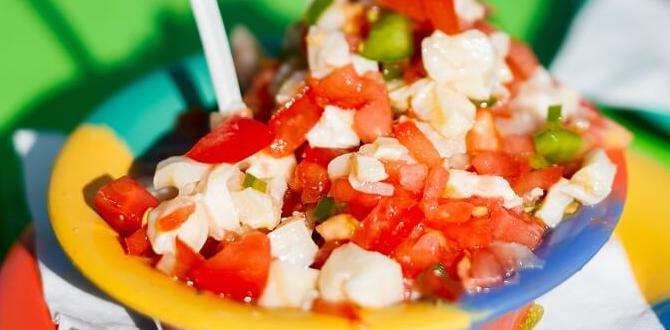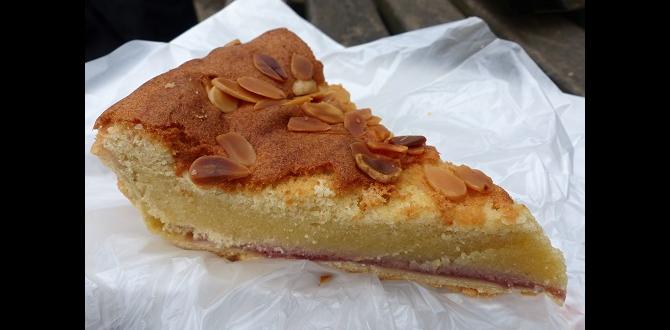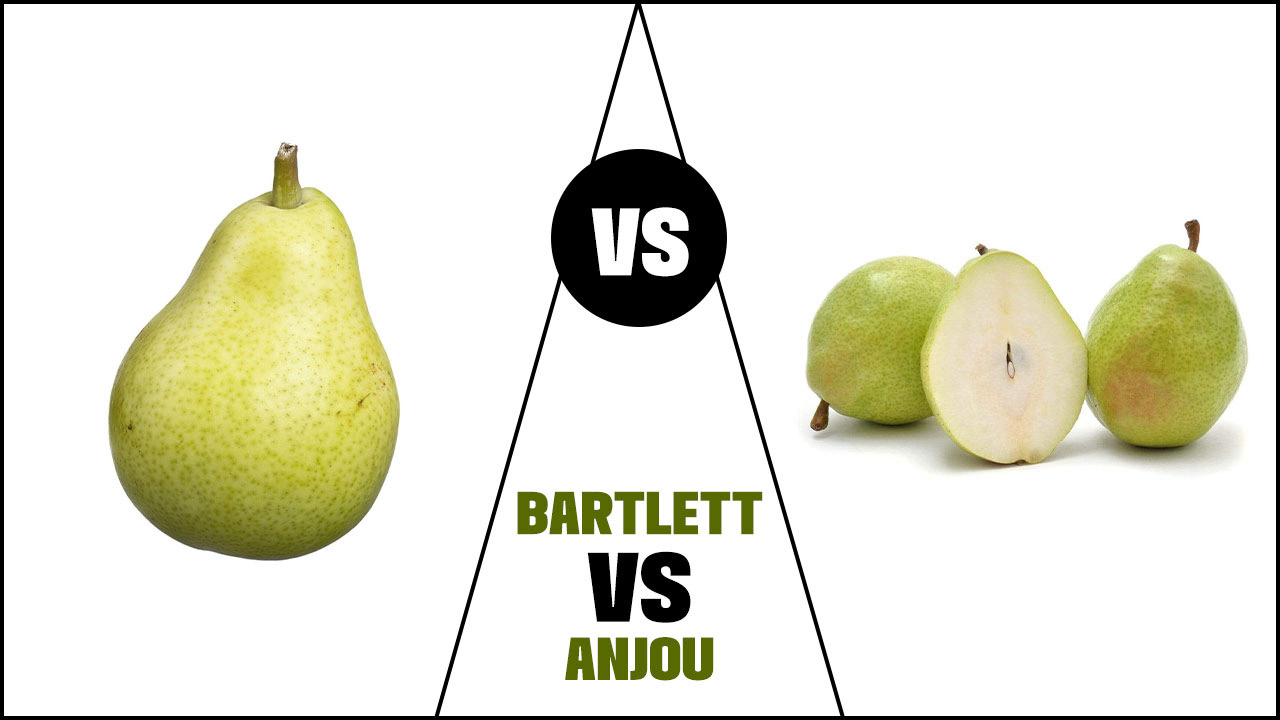Quick Summary: Cross-promoting chefs and culinary tours involves strategic partnerships to amplify reach, attract new audiences, and enhance the appeal of both offerings. By leveraging each other’s strengths, chefs gain exposure for their culinary talents, while tour operators attract food-focused travelers. This guide provides essential steps for successful collaboration.
Hey there, fellow food adventurers! Ever wonder how some chefs seem to pop up everywhere, linked to exciting travel experiences? Or maybe you’re planning a fantastic culinary tour and want to draw in a crowd who already loves great food. It can feel like a puzzle, right? How do you get your amazing recipes or unforgettable tours in front of the perfect people? Don’t worry, it’s simpler than you think! We’re going to break down how chefs and tour operators can team up to create something truly special. Get ready to discover how to make your passion for food and travel shine brighter, together!
Why Chefs and Tours Should Cross-Promote
In the vibrant world of food and travel, collaboration is key! Imagine a chef’s incredible talent paired with the immersive experience of a curated tour. It’s a match made in gastronomic heaven. When chefs and tour operators cross-promote, they create a powerful synergy. This partnership doesn’t just expand their reach; it offers something unique and highly desirable to their audience. Think of it as doubling the magic!
For chefs, this means showcasing their skills beyond their restaurant or kitchen. It’s an opportunity to connect directly with people who are passionate about food, sharing their culinary stories and inspiration in new, exciting environments. For tour operators, partnering with acclaimed chefs instantly elevates their offerings. It signals quality, expertise, and a truly authentic experience for travelers seeking more than just sightseeing – they’re looking for a culinary journey.
This kind of collaboration capitalizes on shared passions. People who love exploring new foods are often the same people who love exploring new destinations. By working together, both parties can tap into a highly engaged and relevant audience, creating a win-win situation that drives mutual growth and excitement.
Understanding the Synergy: Chefs and Culinary Tours
The connection between chefs and culinary tours is incredibly natural. A chef embodies the heart and soul of a region’s cuisine. Their techniques, their signature dishes, and their personal stories are what make food exciting. A culinary tour, on the other hand, is all about experiencing a destination through its flavors. It’s about tasting local ingredients, learning traditional cooking methods, and understanding the culture behind the food.
When these two elements combine, the result is a deeply immersive and memorable experience. A chef can lead a special cooking class on a tour, share insights into local food traditions, or even design exclusive menus for tour participants. This isn’t just about eating; it’s about learning, connecting, and celebrating food in its purest form. For travelers, this means getting insider access to culinary expertise and experiencing a destination in a way that goes far beyond a typical tourist itinerary. It’s about creating authentic, flavorful memories.
For instance, imagine a tour through Tuscany where a renowned pasta-making chef shares their family secrets in a rustic farmhouse. Or a trip to Vietnam where a celebrated pho master walks guests through sourcing the freshest ingredients and perfecting the broth. These are the kinds of experiences that cross-promotion can bring to life, making them more accessible and appealing to a wider audience.
Key Benefits of Cross-Promoting
Teaming up between chefs and culinary tours isn’t just a nice idea; it brings tangible advantages. Let’s dive into why this partnership is so beneficial for everyone involved:
- Expanded Audience Reach: You gain access to each other’s followers, email lists, and social media platforms. It’s like opening a new door to potential customers you might never have reached otherwise.
- Enhanced Brand Value and Credibility: Associating with a respected chef or a well-regarded tour operator adds prestige. It tells potential customers that your offering is high-quality and trustworthy.
- Unique and Compelling Offers: Together, you can create packages or events that are truly one-of-a-kind. Think chef-led market tours, exclusive cooking workshops in beautiful locations, or tasting menus entirely inspired by a tour destination.
- Increased Bookings and Sales: More visibility and more attractive offers directly translate into more customers signing up for tours or attending chef events.
- Content Creation Opportunities: Joint ventures provide fantastic material for social media, blog posts, and marketing campaigns. Think behind-the-scenes videos, interviews, and stunning food photography.
- Customer Loyalty and Engagement: Offering exclusive collaborations can delight existing customers and encourage repeat business. They’ll be eager to see what new unique experiences you create together.
Essential Steps for Successful Cross-Promotion
Ready to make some delicious connections? Here’s a step-by-step guide to help chefs and tour operators successfully cross-promote each other.
1. Identify the Right Partner
This is crucial! You want a partnership that feels natural and mutually beneficial. Think about your target audience. Who are they? What are their interests? Look for chefs whose culinary style complements your tour’s theme or destination. For example, if you run a wine tour in France, partnering with a chef specializing in French regional cuisine would be a great fit. Likewise, a chef focusing on healthy, plant-based cooking might want to partner with an eco-tourism or wellness retreat operator.
Consider:
- Audience Overlap: Do your followers or clients share similar interests and demographics?
- Brand Alignment: Does the chef’s or tour’s brand image match yours? Are your values similar?
- Reputation: Are they well-respected in their field? Do they have positive reviews and a strong online presence?
- Logistical Compatibility: Can you realistically work together given your locations and operational styles?
A great resource for finding potential partners could be local culinary associations or tourism boards. For instance, organizations like the USA Today Travel Cuisine Section often highlight notable chefs and culinary trends. National Geographic also frequently features destinations with strong culinary identities, which can point to tour operators in those regions.
2. Define Clear Goals and Expectations
Before you even start talking about marketing, sit down and discuss what you both hope to achieve. Are you aiming to increase bookings for a specific tour package? Are you looking to boost brand awareness? Do you want to create a special event together? Setting clear, measurable goals early on ensures both parties are on the same page and working towards a common objective.
Discuss:
- Specific Objectives: e.g., “Increase tour bookings by 15%,” “Gain 1000 new Instagram followers,” “Generate 5 media mentions.”
- Timeline: When will the collaboration take place? Is it a one-off event or an ongoing campaign?
- Roles and Responsibilities: Who will handle what? For example, who creates the social media content? Who manages customer inquiries?
- Success Metrics: How will you measure success? What data will you track?
Having these discussions documented in a simple agreement can prevent misunderstandings down the line. It’s about building a solid foundation for your promotional efforts.
3. Develop a Joint Marketing Strategy
This is where the magic happens! Brainstorm creative ways to promote each other. Think about leveraging both your online and offline channels.
Online Strategies:
- Social Media Campaigns: Create joint posts, run contests, or host live Q&A sessions on platforms like Instagram, Facebook, or TikTok. Feature stunning photos and videos of your food and travel experiences.
- Email Marketing: Announce your collaboration to your respective email lists. Offer exclusive discounts or early bird access to joint promotions.
- Blog Content: Write guest posts for each other’s blogs. A chef could write about the food culture of a tour destination, while a tour operator could highlight a chef’s signature dishes that travelers can experience.
- Website Integration: Feature each other on your websites. Include links to each other’s services and create dedicated landing pages for joint offers.
- Online Advertising: Consider running targeted ads on social media or search engines promoting your collaborative packages.
Offline Strategies:
- In-Person Events: Host meet-and-greets, cooking demonstrations, or tasting events. A chef could present at a pre-tour briefing, or a tour operator could set up a booth at a chef’s restaurant event.
- Print Materials: Include flyers or brochures about the partner in welcome packs or at events.
- Cross-Promotion at Venues: Place business cards or promotional materials at each other’s locations (e.g., restaurant, tour departure points).
For example, a chef might host a themed dinner at their restaurant inspired by a particular tour destination, with a representative from the tour company present to talk about the upcoming trips. Or a tour company might offer a special discount on their tours to customers who dine at a partner chef’s restaurant during a specific period.
4. Create Exclusive Offers and Packages
To really capture attention, create something special that only arises from your collaboration. This gives people a compelling reason to engage with both offerings.
Consider:
- Discounted Packages: Offer a bundle deal where booking a specific tour gets you a discount at the chef’s restaurant, or a reservation at the chef’s restaurant comes with a discount code for a tour.
- Exclusive Access/Experiences: This is where you can really shine. Imagine a tour that includes a private cooking class with the chef, or a chef’s tasting menu designed exclusively for tour participants.
- Co-Branded Merchandise: Create limited-edition items, like a recipe book from the chef featuring ingredients from the tour destination, or branded kitchen tools with both logos.
- Early Bird Specials: Offer special deals to those who book early for your collaborative packages.
A fantastic example would be a “Taste of Provence” tour that includes a weekend stay with a renowned Provençal chef, learning to cook classic dishes using local market produce, followed by a guided tour of the region’s vineyards and olive groves. The exclusivity makes it incredibly appealing.
5. Leverage Each Other’s Content and Platforms
Don’t just mention each other; actively showcase what makes your partner special! Share high-quality photos, videos, testimonials, and stories about your collaborator across all your communication channels.
Examples include:
- Spotlight Series: Dedicate a week to featuring the chef and their work on your tour company’s social media, or vice-versa.
- Video Collaborations: Film a short video where the chef discusses why they love a particular cuisine or destination, and how it inspires their cooking. Or, have the tour operator interview the chef about their culinary journey.
- Customer Testimonials: Encourage happy customers from either side to share their experiences with the partner offering.
- Cross-Referral Programs: Create a system where clients of one can receive a benefit when they book with the other.
This constant, visible promotion reinforces the partnership and keeps both offerings top-of-mind for your audiences. It builds trust and creates a sense of excitement around what you’re doing together.
6. Track and Analyze Results
To know if your cross-promotion efforts are successful, you need to track what’s working. This helps you refine your strategy for future collaborations.
Key metrics to monitor:
- Website Traffic: Use Google Analytics to see how much traffic you’re driving to each other’s sites via shared links or campaign codes.
- Conversion Rates: Track how many people who came from a partner’s referral actually booked a tour or bought a product.
- Social Media Engagement: Monitor likes, shares, comments, and new followers generated from joint campaigns.
- Email Open and Click-Through Rates: See how engaged your respective email lists are with the collaborative content.
- Direct Bookings/Sales: Ask new customers how they heard about you. Use unique promo codes for each partner to track direct sales.
For travel-related promotions, tools like UTM parameters in your links can be invaluable for tracking specific campaign performance in Google Analytics. This data-driven approach allows for continuous improvement. Reputable online analytics platforms like Google Analytics offer robust features for tracking website performance, which is essential for collaborative marketing efforts.
This careful tracking allows you to understand which promotional activities were most effective, enabling you to maximize your return on investment for future ventures.
Table: Comparing Collaboration Models
Choosing the right way to collaborate can make all the difference. Here are a few common models, each with its pros and cons:
| Collaboration Model | Description | Pros | Cons |
|---|---|---|---|
| Package Deals | Bundling a tour with a chef’s exclusive offer (e.g., dining voucher, cooking class). | High perceived value for customers, direct revenue generation for both. | Requires careful pricing and negotiation, potential for cannibalization if not managed well. |
| Content Sharing & Promotion | Regularly featuring each other on social media, blogs, and newsletters. | Low cost, broad reach, builds brand awareness and credibility. | May not directly lead to immediate sales, requires consistent effort. |
| Joint Events | Organizing shared experiences like workshops, tasting dinners, or meet-and-greets. | Creates unique experiences, high engagement, potential for media interest. | Higher organizational effort and cost, requires strong logistical coordination. |
| Affiliate/Referral Programs | Offering commissions or discounts for successful referrals. | Performance-based, incentivizes sales, relatively easy to set up. | Requires tracking mechanisms, can dilute profit margins if commission is too high. |
Creative Cross-Promotion Ideas for Chefs and Tours
Let’s spice things up with some fun and creative ideas to get your cross-promotion buzzing!
Chef-Led Market Tours & Cooking Demos
Imagine a tour that kicks off with participants joining a celebrated local chef to explore a vibrant farmer’s market. The chef can guide guests to choose the freshest ingredients, explaining their significance and how they’ll be used. This is followed by an intimate cooking demonstration or even hands-on workshop where the chef prepares a dish or two using the market treasures. This offers unparalleled insight into local culinary culture and directly showcases the chef’s expertise. For the tour operator, it’s a signature experience that sets their tours apart.
Destination-Themed Dinners & Travel Teasers
A chef can host a series of special tasting dinners at their restaurant, with each menu inspired by a culinary destination the tour company offers. During these dinners, representatives from the tour company can be present, sharing captivating photos and stories about the destination, and offering exclusive early-bird discounts for attendees interested in booking a trip. It’s a fantastic way to plant the seed for future travel while treating guests to an extraordinary meal.
“A Day in the Life” Social Media Takeovers
This is a fun, engaging way to give followers a behind-the-scenes look. The chef could ‘take over’ the tour company’s Instagram stories for a day, sharing their journey to the market or preparing a special dish. Conversely, the tour operator could take over the chef’s social media during their travels, showcasing the destination’s food scene and connecting it back to the chef’s culinary inspiration. This provides authentic, relatable content that builds connection.
Co-Authored Recipe E-books or Guides
Compile a beautiful, shareable e-book or downloadable guide. The chef can contribute signature recipes inspired by their travels or the destination, while the tour operator can provide insights into the best places to eat, culinary traditions, or tips for food lovers visiting the region. This creates a valuable piece of content that can be used as a lead magnet or a bonus for bookings, providing ongoing value to customers.
Exclusive “Chef’s Table” Tour Packages
Design a limited-edition tour package that includes exclusive access to a chef. This could mean a private dinner prepared by the chef at their home or a special venue, a one-on-one Q&A session about their culinary philosophy, or even a curated gastronomic journey through their favorite local eateries. These high-end packages appeal to foodies seeking unique, unforgettable experiences.
Partnership with Tourism Boards and Culinary Organizations
Leverage the power of larger entities. Many tourism boards and culinary organizations are keen to promote local food culture and attract visitors. Approaching them with a joint proposal for a chef-tour operator collaboration can open doors to new funding, marketing channels, and event opportunities. For example, a tourism board might sponsor a series of guided culinary tours led by a local star chef, promoting both the destination and its food talent.





